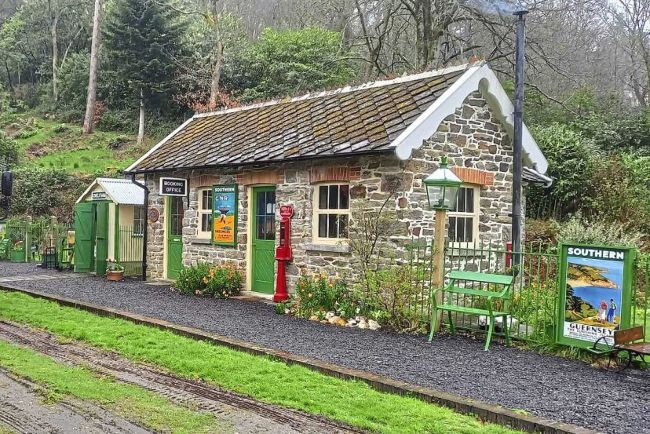HOW TO BUILD DAPOL’S KITMASTER L&B BUILDINGS
Chris Leigh test ‐builds Dapol’s new range of laser-cut kits, depicting structures of the narrow gauge Lynton & Barnstaple Railway.
It is to be hoped that the superb Manning, Wardle 2 ‐ 6‐2T and Lynton & Barnstaple coaches from Lionheart Trains will prompt a renewed interest in On16.5 narrow gauge modelling. That is,7mm:1ft narrow gauge running on 16.5mm gauge (‘OO’) track. True, 7mm:ft scale accessories, vehicles and figures can be used, but narrow gauge railway buildings in the scale are few and far between. Parent company Dapol has addressed the lack of Lynton & Barnstaple buildings with a handful of kits under the revived Kitmaster label. These new Kitmaster kits are, however, about as far removed from the original range of easy-to-build, cheap plastic locomotive kits as it is possible to get.

Chelfham station, as restored by the L&BRA, in September 2017.
PHOTOGRAPHY: CHRIS LEIGH
THE PROTOTYPE
The Lynton & Barnstaple Railway, opened in 1898, sharing a new Barnstaple Town station with the London & South Western branch to Ilfracombe. Heading north from Barnstaple across the edge of Exmoor, the L&B served only small villages with intermediate stops at Snapper halt, Chelfham, Bratton Fleming, Blackmoor Gate, Parracombe halt, Woody Bay, Caffyns halt and Lynton. Blackmoor Gate, Woody Bay and Lynton boasted substantial station buildings constructed by Jones of Lynton in what was known as the Nuremburg style. The halts merely had small shelters but the two intermediate stations at Chelfham and Bratton Fleming had small stone-built stations constructed by the contractor. The one at Chelfham had merely a couple of rooms, an office and a waiting room, with a simple gable roof, while Bratton was slightly larger, with a hipped roof.